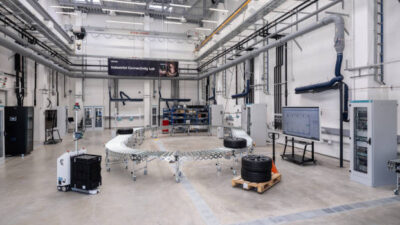Site poll suggests how to realize automation’s untapped potential for projects. Replacing old automation technology with new technology performing the exact same functions rarely provides the business value improvements necessary to justify the investment. Automation, properly applied, is the best value a company can make.

Ask Control Engineering: How can I get the most value out of the next automation project?
Answer: Automation projects have the greatest opportunity to add value when process improvements are made along with the application of new technology.
Control Engineering’s recent website poll indicated that 78% of all upgrades of automation systems are direct functional replacements (after subtracting out the projects that involve automating previously manual processes). Although this is a more optimistic percentage than what I had expected, it still demonstrates that realizing automation’s potential value for projects is not a design consideration.
At the Control System Integrators Association (CSIA) conference I claimed a considerable percentage of automation projects were not providing the value they could and should be delivering because so many brownfield automation projects are executed to provide a functional replacement of an aging system with a newer system. Replacing old automation technology with new technology performing the exact same functions rarely provides the business value improvements necessary to justify the investment.
This practice has created a significant perception problem when it comes to automation investments. Many executives I have talked with have indicated that they do not believe that investments in automation technologies do not provide positive financial returns like other potential capital investments. As a result, they have redirected capital away from automation projects to more value-generating investment areas. This is a shame because automation technologies have tremendous potential to add value to a company than other investment areas.
A considerable percentage of automation projects involve upgrading older systems. As these projects are initiated, it is critical that engineers consider the incremental value in generating capabilities and functions available in newer automation systems and include these in the functional specifications for the replacement systems. Once executives start to see strong returns on automation investments their perspectives on automation investments will change.
Fifty-four percent of respondents to the poll [at the time Martin had looked at the results] had indicated that less than 60% of the automation technology is actually in use at their location and 31% of respondents indicated less than 20% utilization. This is consistent with the points I made at the CSIA conference and in the video with Control Engineering content manager, Mark T. Hoske. [See link to related information at the bottom of this post.]
Most automation systems are installed to a specification that includes only a portion of the inherent capability. Often the thought is that after the project has been started up the plant team can use the rest of the inherent capability of the systems that will add value to their operation. Unfortunately, engineering staffs over the past two decades do not have time to implement the unused capability due to downsizing. Typically, the capability implemented during the initial project is the only capability that is utilized over the systems lifecycle. This is another reason that the perceived value of automation investment may be less than it should be.
Based on this information, it’s not surprising 64% of respondents had no plans-or know of no plans-to modernize their installed systems. Unfortunately, many in the industry have stuck with the viewpoint that there is no good financial argument for modernizing if the currently installed system can be kept operational.
Best automation value
This is problematic because many installed automation systems are over two decades old. In one respect, this is actually a tribute to the quality of these systems. In another respect this is a sad commentary on how we deal with automation systems. There is considerable evidence that automation systems, effectively applied, can provide more value than almost any other investment a company can make.
What is suppressing the actual value realized is not the systems’ potential; it is the business processes and practices used across the industry. It is time everyone realizes the true value automation technologies have to offer by changing the entrenched practices in a manner that will enable value to be unleashed.
– Dr. Peter Martin is vice president business value consulting, Schneider Electric. Edited by Chris Vavra, production editor, CFE Media, Control Engineering, [email protected].
Key Concepts
- 78% of all upgrades of automation systems are direct functional replacements, which indicates that realizing automation’s potential value for projects is not a design consideration.
- It is critical that engineers consider the incremental value in generating capabilities and functions available for automation projects.
- Current processes practices by business and companies are suppressing automation’s actual value.
Consider this
What other methods can you use to realize an automation project’s potential?



